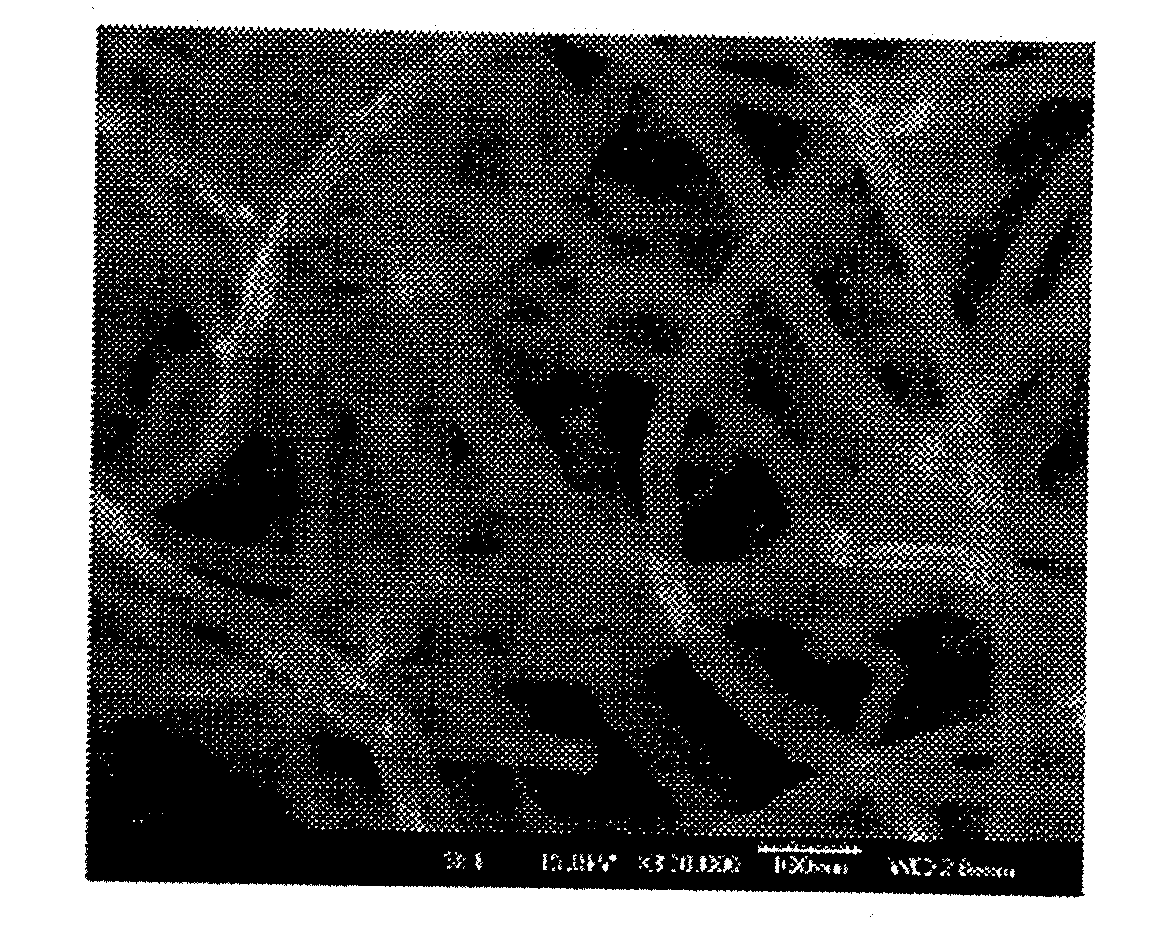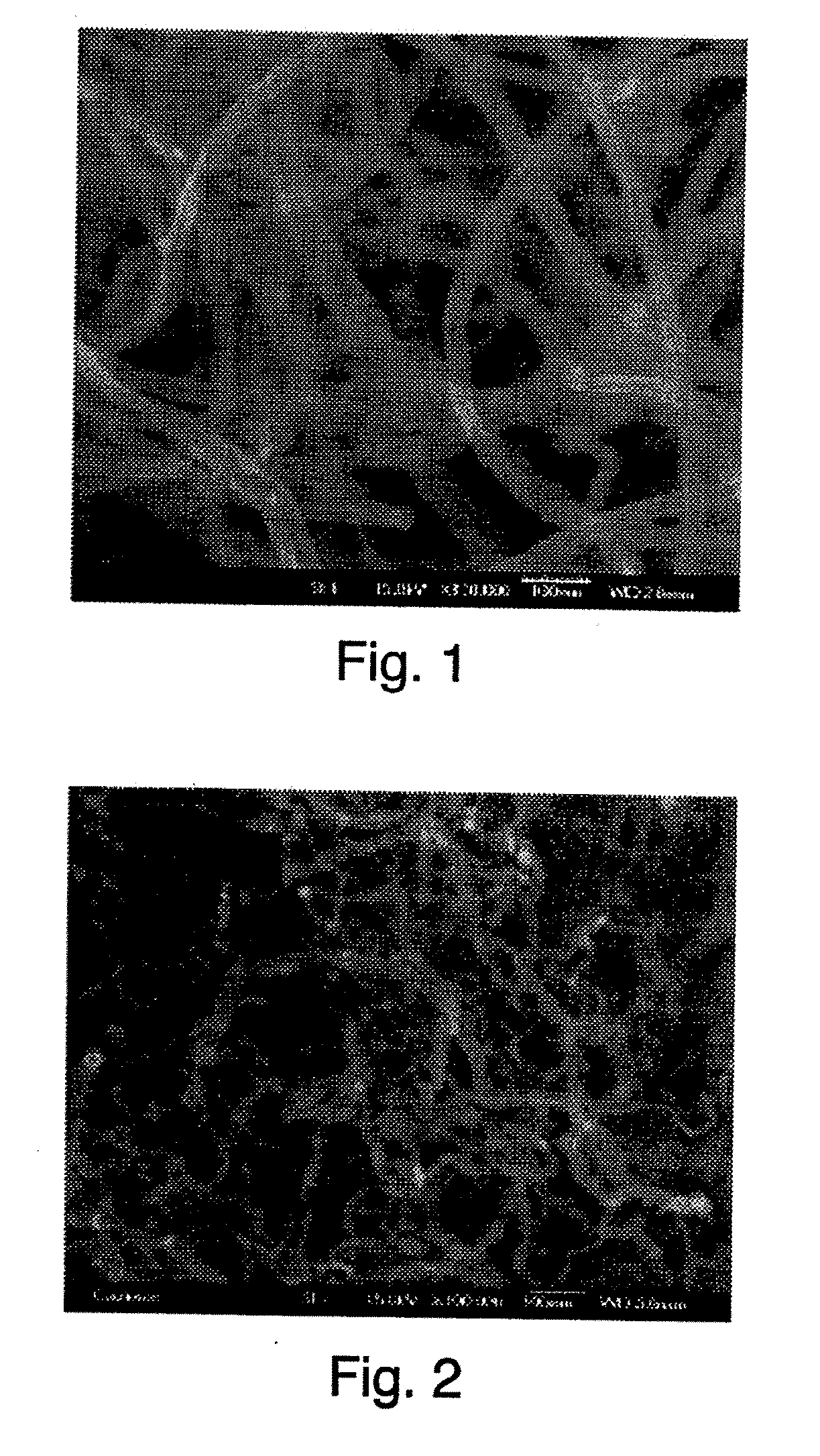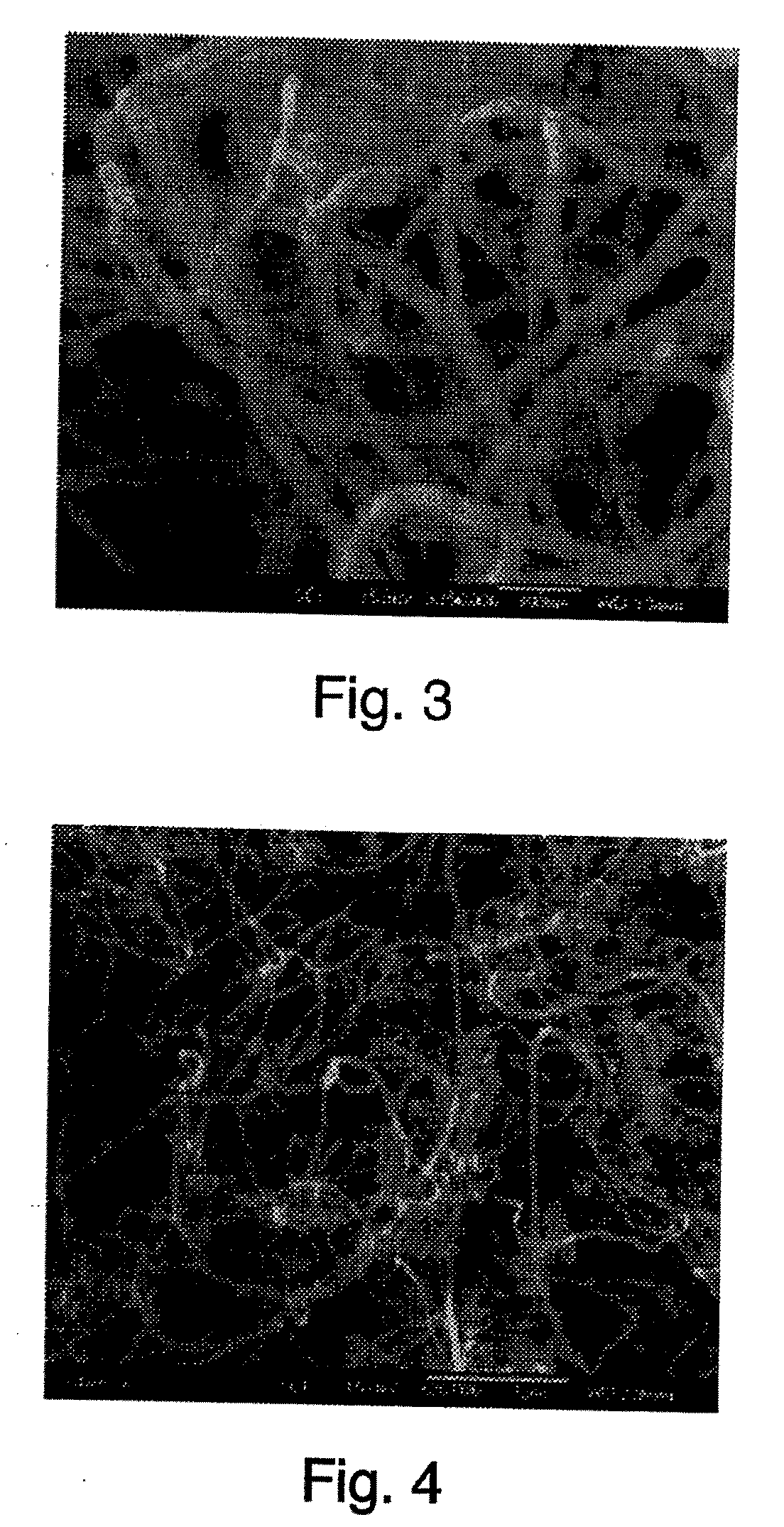Combustion-Assisted Substrate Deposition Method For Producing Carbon Nanosubstances
a carbon nanotube and substrate technology, applied in the direction of catalyst activation/preparation, physical/chemical process catalysts, metal/metal-oxide/metal-hydroxide catalysts, etc., can solve the problems of limiting the commercial success of products incorporating such materials, high cost of producing pure and uniform samples of cnts using currently available methods, and inability to produce pure cnts using this protocol
- Summary
- Abstract
- Description
- Claims
- Application Information
AI Technical Summary
Benefits of technology
Problems solved by technology
Method used
Image
Examples
example 1
Laboratory Scale Synthesis
[0076]A titanium sheet having a thickness of 0.1 mm was formed into a cylinder having a diameter of 50 mm and a height of 15 mm. The cylinder was immersed in a 40 wt % aqueous solution of lithium silicate for about 1 minute, taken out, and dried at 120° C. for 1 hour, to form a lithium silicate film on the substrate.
[0077]The coated substrate was then immersed in a 5% by weight aqueous nickel nitrate solution for about 10 minutes, taken out, dried 120° C., and annealed at 600° C. for about 1 hour to generate a catalyst-bearing harvesting layer on the titanium support.
[0078]A premixed combustible gas composition consisting of ethylene and air was introduced into a burner, and this was ignited to generate a flame. The coated titanium cylinder was inserted and left in contact with the flame for 12 minutes. A black substance was produced on the substrate surface. Observation of the black substance with a scanning electron microscope revealed that it consisted e...
example 2
Pilot Scale Combustion System
[0080]Primary system components included a burner, a mounting plate, an electrical / control panel, a computer control station, gas supply tanks and automatic switch-over feed manifolds, a gas control panel, and a water cooling system. The burner and the mounting plate were housed in a 1 meter×1.3 meter exhausted section of the system.
[0081]The system included a computer control station, which was a standard PC running control and data acquisition / logging software (LabView™ 7, National Instruments Inc.) Gas flow was controlled by mass flow controllers and a dedicated control processor that was integrated into the LabView™ software. Automatic switch-over feed manifolds allowed continuous operation by sensing and switching from empty to full gas supply tanks, and empty tanks could be changed without interrupting the operation. Electrical controls ensured safe operation by interlocking several key variables, including hood pressure (exhaust flow), internal te...
PUM
| Property | Measurement | Unit |
|---|---|---|
| Temperature | aaaaa | aaaaa |
| Temperature | aaaaa | aaaaa |
| Solubility (mass) | aaaaa | aaaaa |
Abstract
Description
Claims
Application Information
 Login to View More
Login to View More - R&D
- Intellectual Property
- Life Sciences
- Materials
- Tech Scout
- Unparalleled Data Quality
- Higher Quality Content
- 60% Fewer Hallucinations
Browse by: Latest US Patents, China's latest patents, Technical Efficacy Thesaurus, Application Domain, Technology Topic, Popular Technical Reports.
© 2025 PatSnap. All rights reserved.Legal|Privacy policy|Modern Slavery Act Transparency Statement|Sitemap|About US| Contact US: help@patsnap.com



